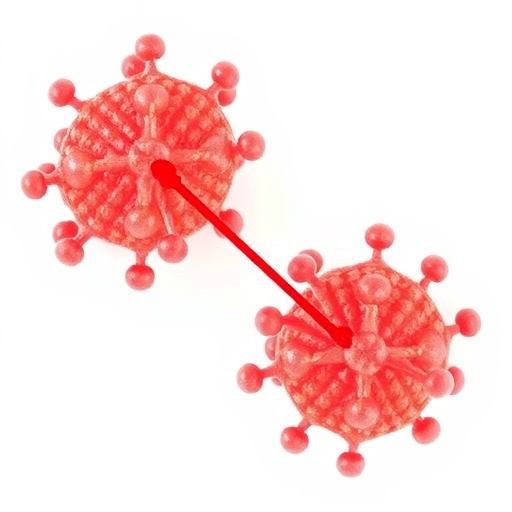In a groundbreaking study that exemplifies the innovative intersection of sustainability and material science, researchers have unveiled a novel approach to utilizing waste biomass, particularly fruit peels, to produce zinc oxide (ZnO) nanoparticles. This insightful exploration, led by Wu, Feng, and Su, offers promising implications for addressing the pervasive issue of corrosion induced by sulfate-reducing bacteria (SRB), which pose significant threats to infrastructure integrity, especially in industries where metal structures are prevalent.
The focus of the research centers around the concept of a circular economy, a model aimed at minimizing waste and making the most of resources. By converting what is typically considered waste—fruit peels—into valuable nanomaterials, the study not only promotes resource efficiency but also mitigates the environmental burden associated with plastic mining and landfill. This is particularly significant considering the growing global emphasis on sustainability and waste reduction.
ZnO nanoparticles have gained attention for their unique properties, characterized by their high surface area, non-toxicity, and excellent antibacterial performance. These characteristics render them particularly effective against SRB, which are notorious for accelerating metal corrosion through metabolic processes that produce corrosive by-products. The innovative approach taken by Wu and colleagues embraces these advantages by deriving ZnO nanoparticles from biodegradable materials, asserting a dual benefit of waste repurposing and corrosion prevention.
In their experiments, the researchers employed an eco-friendly extraction method to produce ZnO nanoparticles from various fruit peels. This process not only ensures that the derived nanoscale materials are sustainable but also highlights the feasibility of industrial applications. Such advancements could revolutionize the fabrication processes in numerous industries, including construction and marine engineering, where material degradation from corrosion results in substantial economic losses.
The team meticulously characterized the physical and chemical properties of the synthesized nanoparticles using advanced techniques such as scanning electron microscopy (SEM) and X-ray diffraction (XRD). Through these analyses, they confirmed the successful transformation of fruit peel biomass into ZnO nanoparticles, characterized by their crystalline structure and diverse morphology. These findings affirm the viability of utilizing agricultural waste as a precursor for functional nanomaterials, opening avenues for further research into alternative biomass sources.
Another critical aspect of the study lies in evaluating the environmental impact of this innovative strategy. Traditional methods for combating corrosion often rely on toxic chemicals and synthetic coatings that can harm ecosystems. In contrast, the fruit peel-derived ZnO nanoparticles present a greener solution, potentially aligning with stricter environmental regulations on harmful substances. The transition to bio-based materials ushers in a new era in corrosion management where sustainability does not compromise performance.
Furthermore, the research underscores the economic potential of using agricultural waste as a feedstock for high-value nanomaterials. As global fruit production continues to rise, the accumulation of peels poses waste management challenges. This study suggests a profitable avenue whereby farmers and food processors can transform what would traditionally be considered refuse into revenue-generating products while simultaneously addressing critical corrosion issues.
The implications of these findings extend beyond corrosion management. The versatility of ZnO nanoparticles allows for their application in various domains, including cosmetics, healthcare, and electronics, demonstrating the potential breadth of impact this research could have. For instance, the antimicrobial properties of ZnO nanoparticles can be harnessed in the development of more effective disinfectants and coatings that inhibit bacterial growth.
Despite these promising results, the study also identifies areas for future research. Understanding the long-term stability and efficacy of these nanoparticles, as well as their behavior in complex environmental conditions, will be essential for broader implementation. Additionally, scaling the production process while maintaining cost-effectiveness and material integrity poses challenges that warrant further investigation.
In conclusion, this pioneering research by Wu, Feng, and Su stands at the forefront of the quest for sustainable technologies in material sciences. By leveraging waste biomass to produce effective corrosion inhibitors, they illustrate a potent solution that could revolutionize not only how we manage waste but also how we approach corrosion—a ubiquitous challenge in maintaining the integrity of our metal infrastructures. This circular strategy not only highlights the ingenuity inherent in eco-friendly innovations but also offers a blueprint for future studies aimed at harmonizing industrial needs with environmental stewardship.
Subject of Research: Waste biomass utilization for producing ZnO nanoparticles.
Article Title: A Circular Strategy for Waste Biomass Utilization: Fruit Peel-Based ZnO Nanoparticles against SRB-Induced Corrosion.
Article References:
Wu, F., Feng, Y., Su, Y. et al. A Circular Strategy for Waste Biomass Utilization: Fruit Peel-Based ZnO Nanoparticles against SRB-Induced Corrosion.
Waste Biomass Valor (2025). https://doi.org/10.1007/s12649-025-03383-0
Image Credits: AI Generated
DOI: https://doi.org/10.1007/s12649-025-03383-0
Keywords: ZnO nanoparticles, waste biomass, fruit peel, corrosion, sustainability, circular economy.




